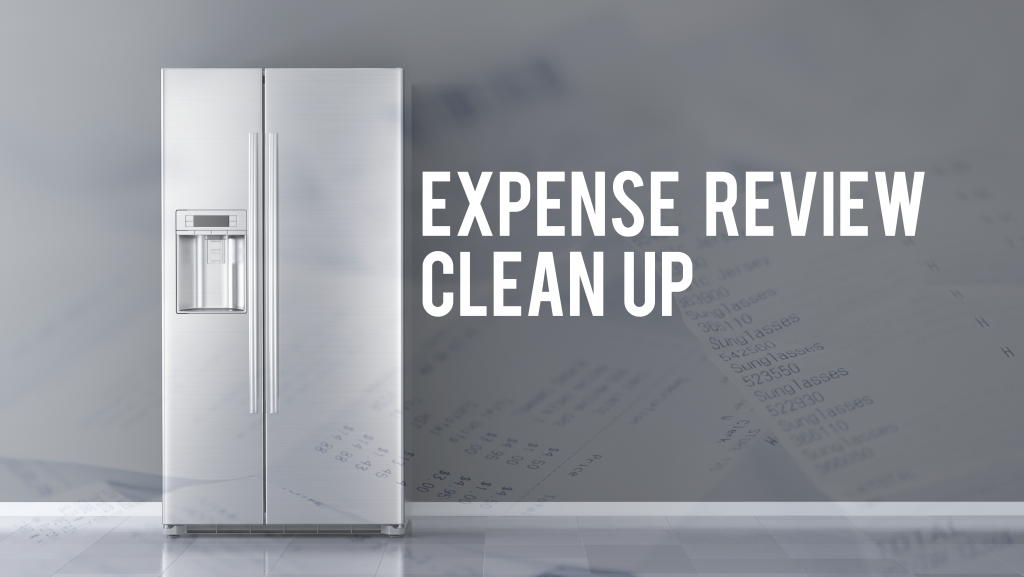Doing an expense review is like cleaning out your refrigerator — the tedious work still needs to get done, even if nobody wants to do it. In the case of your fridge, it takes a brief scan of the lower shelf to find forgotten or possibly spoiled food. In the case of your business, an expense review checks corporate spend to uncover suspicious card activity and, ultimately, could reveal misuse and fraudulent behavior.

Fun Fact:
“Clean out your refrigerator day” is observed on November 15th.
Challenges of an expense review
Unlike cleaning your fridge, identifying bad card activity is not as simple as checking an expiration date stamped on the side of a carton of spoiled milk. Instead, it requires looking for patterns and trends in data. Such monitoring takes time — and a lot of it, if the job is being done manually. Who has the time to figure out what patterns to look for — and then, look for them?
Specifically searching out fraud schemes can be an even more complicated task. Fraud schemes can change. Misuse or compliance can change too — every time a list of preferred suppliers changes or a policy is updated.
The sheer volume of data needing to be reviewed monthly can also be a daunting project. The number of transactions to monitor, the number of receipts to review, and the time it takes to check across different payment platforms (P-Cards, T&E Cards, and/or out-of-pocket expenses) further add to the workload. These tasks at hand can overwhelm even the most seasoned auditor.
Risk of glossing over the expense data
When eyes start to glaze over the mystery containers found at the back of the fridge and it becomes difficult to decipher contents without a label, many of those unknown food items simply end up getting tossed in the garbage — even if the food is still good. Similarly, the need to monitor thousands or even a million transactions every month can cause a reviewer to procrastinate in completing the job or worse yet, encourage a tendency to gloss over the data and no longer recognize the difference between good card behavior and bad.
Benefits of cleaning up the expense review
Perhaps cleaning the refrigerator is not on your list of things to do this week (or this month); yet, a more sophisticated “audit” of the food in the refrigerator would reveal a lot about your shopping habits. The same can be said for expense data. A more rigorous expense review with monitoring and analysis can reveal important insights about cardholder purchasing behavior. However, when transaction data is not properly assessed and labeled, or the data analytics are not fully comprehended, a company runs the risk of losing the benefits that data monitoring and analytics normally provide. Those benefits include:
- An enhanced understanding of the spending trends within your organization. By learning past cardholder purchasing behavior and department spending habits, you can better plan for the year ahead.
- A higher level of the company’s financial security. Monitoring big data provides an easier, more efficient way of finding fraud and abuse on corporate credit cards. Reviewing 100 percent of your company’s credit card data leaves no stone unturned in helping to mitigate risk.
- Better policy compliance. Your company created policies and procedures for a reason — so that your expense cards are used properly. The controls instituted by policy rules and guidelines prevent cardholders from purchasing prohibited items and misusing their assigned expense cards. Monitoring transactions, checking for compliance, and communicating the findings reminds cardholders that someone is indeed watching.
- Realized cost savings. When companies partner with particular hotels and airlines for travel or with a preferred supplier for office supplies, they receive benefits in the form of discounts and/or negotiated deals, which help lower the price of received products and services. When cardholders fail to follow policy and instead purchase from vendors or suppliers other than partner businesses, the cost savings also fails to be realized. Policies are a place to start; however, further monitoring of expense transactions is needed to make sure cardholders remain compliant so that savings are truly realized.
Monitoring solutions to manage expenses
These benefits from data monitoring and analysis are within reach, thanks to modern technology that’s equipped to handle such a large data workload. Forbes Insights describes the importance of analytics and investing in them, especially for reducing unwanted expenses. Expense monitoring and reviews don’t have to be tedious, time-consuming, or overly complicated. Solutions from Card Integrity deliver efficiencies with data monitoring and improve transparency to your expense review process with data analytics and professional expertise. Many card programs discover up to 10 ways to identify non-compliance; Card Integrity, on the other hand, can boost your compliance check by scanning thousands of possible misuses of expense cards — from personal purchases to making purchases with the wrong vendor. And the number of ways Card Integrity checks for compliance and fraud keeps growing!
Monitoring and data analysis are two important steps in the expense review process. When looking for compliance on corporate credit card transactions, be sure to consider all the available tools and the ongoing controls available to complete these tasks. Taken too lightly, and much of the spending that occurs can lose the benefits that corporate credit cards were originally designed to deliver: cost savings and financial security.
Find the right solution for your company or organization
Waiting won’t make the responsibilities any easier or make the fraud go away. So take the most important step — contact Card Integrity today.



